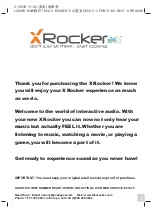
DBS3900 LampSite
Installation Guide
11 (Optional) Installing the EXD3902 and Cables
Issue 08 (2016-05-30)
Huawei Proprietary and Confidential
Copyright © Huawei Technologies Co., Ltd.
225
1.
Hold the EXD3902, hang the two dowels on the top of the EXD3902 attachment plate
onto the separate mounting kit, and push the EXD3902 until it snaps into place, as shown
by illustrations a and b in Figure 11-18.
2.
Use the M6 inner hexagon screwdriver to tighten the screw on the top of the separate
attachment plate to 7 N·m, as shown by illustration c in Figure 11-18.
----End
11.5 Installing EXD3902 Cables
This section describes the procedure for installing EXD3902 cables.
11.5.1 Cabling Requirements
Cables must be laid out according to the specified cabling requirements to prevent signal
interference.
If a cable listed below is not required, skip the cabling requirements of the cable.
General Cabling Requirements
Bending radius requirements
The bending radius of a 7/8'' feeder must be greater than 250 mm (9.84 in.), and the
bending radius of a 5/4'' feeder must be greater than 380 mm (14.96 in.).
The bending radius of a 1/4'' jumper must be greater than 35 mm (1.38 in.). The bending
radius of a super-flexible 1/2'' jumper must be greater than 50 mm (1.97 in.), and the
bending radius of an ordinary 1/2'' jumper must be greater than 127 mm (5.00 in.).
The bending radius of a PGND cable must be at least three times its diameter.
The bending radius of a signal cable must be at least five times its diameter.
Cable binding requirements
Cables of the same type must be bound together.
Different types of cables must be separately laid out and bound, with a minimum
distance of 30 mm (1.18 in.) from each other.
Cables must be bound tightly and neatly. The sheaths of cables must not be damaged.
Cable ties must face the same direction, and those at the same horizontal line must be in
a straight line.
The excess of indoor cable ties must be cut off. The excess of 5 mm (0.197 in.) of
outdoor cable ties should be reserved, and the cut surfaces must be smooth without sharp
edges.
After cables are installed, labels or nameplates must be attached to the cables at their
ends, curves, and interconnection positions.
Security requirements
When laying out cables, avoid sharp objects, for example sharp edges on the wall. If
necessary, use tubes to protect the cables.
When laying out cables, keep cables away from heat sources, or use heat insulation
materials to insulate the cables from the heat sources.
















































